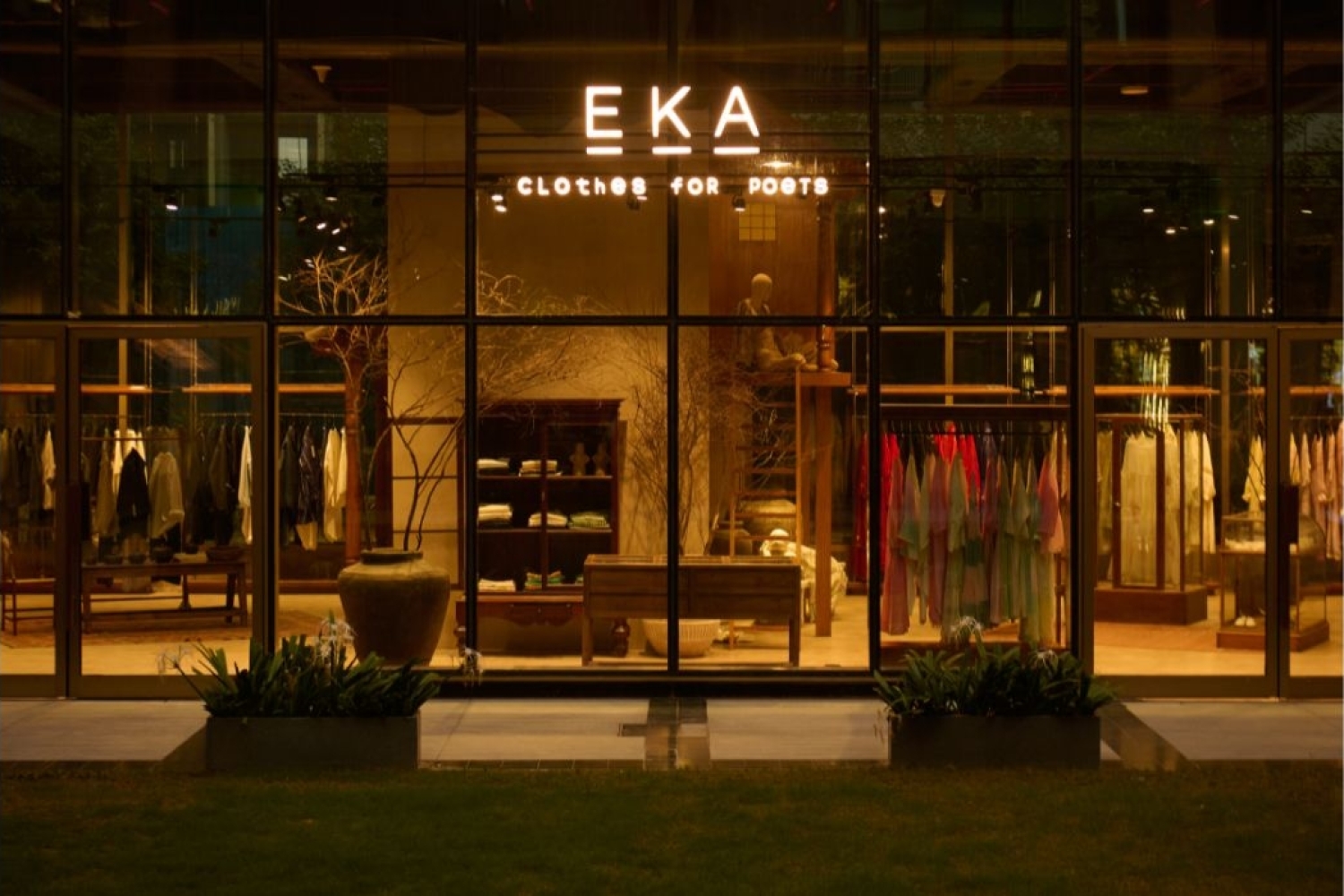

After a decade of building Eka brick by brick,, designer Rina Singh is celebrating a new chapter with the opening of her first fully realized retail space in the city. This elegant, concrete space brings the entire universe of Eka; menswear, womenswear, home textiles, and festive wear, together under one roof, offering a multi-layered experience. With a meticulous eye for detail, Rina sat down with the folks of Amoeba Design and architects Satyajit and Pashmin, Singh to create an atmosphere defined by handmade tiles, antique furniture, and a minimalist, earthy palette. With antiques flown in from Sri Lanka, Kochi and Jodhpur, there was an emphasis on terracotta, stone, and an overall muted tone that allows the architecture and garments to converse naturally. Rina’s journey has come full circle as she completes her brand’s narrative and laying the foundation for its next chapter. We can’t wait to see what’s next.
What does the opening of the new Eka store in Gurgaon represent for you personally, especially since you’ve mentioned it feels like a homecoming?
The opening of the Gurgaon store feels like coming full circle, it is truly a homecoming. I founded Eka in 2011 with a fully integrated studio in Gurgaon where most of our operations take place, except for textile weaving. Over the years, we’ve maintained a small showroom attached to the studio, which has always been appreciated for its warmth and soul. Visitors often said it felt wholesome, a sentiment that deeply resonated with me. I had always wished to open a store right next to where we work, to give people a sense of the complete Eka universe but since we’re located in an industrial area, that wasn’t possible. Finding this space in Gurgaon felt like a dream realized. Gurgaon, being a young and evolving city, brings together people from all over India and the world. There’s still so much room here for shaping its culture, architecture, and landscape—being able to contribute to that is exciting.
The raw, concrete structure of the new space immediately appealed to us it had the kind of potential where the entire universe of Eka could grow and be experienced. This store brings together everything we create: menswear, womenswear, home textiles, artful displays, and now festive wear. The larger space also lets us express our artistic side, allowing visitors to experience the holistic world of Eka in a way that feels truly complete.
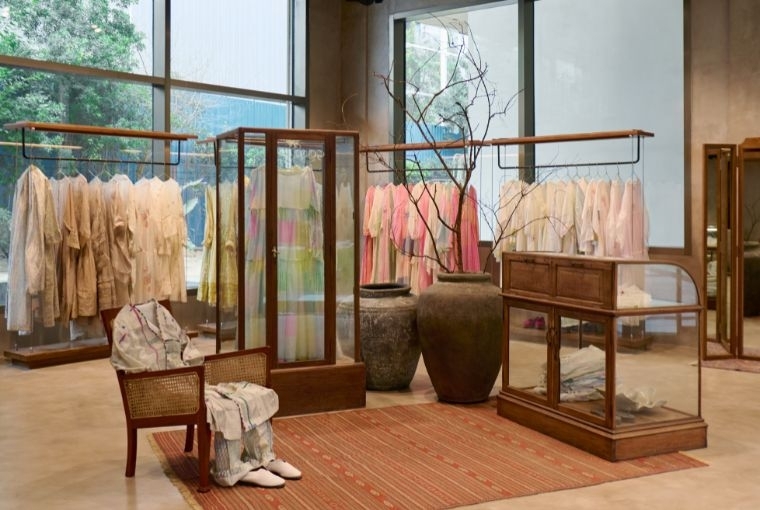
What conversations did you have with Amoeba Design and architects Satyajit and Pashmin to shape the architectural choices of the universe of Eka?
This Gurgaon store marks our third retail space. Our journey in store design began with the Lodi store, created in collaboration with Das Studio and Dharmesh Jadeja. That partnership was particularly meaningful, as Dharmesh’s aesthetics and technique aligned beautifully with our sensibility, resulting in a deeply collaborative and memorable process. For the Mumbai store, we took more of a hands-on approach and executed much of the design ourselves. However, with the Gurgaon store, we knew we needed partners who not only understood technical aspects of design but also shared our passion for Indian aesthetics and craftsmanship. We wanted collaborators who could broaden our perspective in architecture and spatial storytelling.
We found that synergy with Satyajit and Pashmin of Amoeba Design. They have both studied architecture abroad and worked extensively in India, bringing a valuable blend of global perspective and deep understanding of Indian design practices. They resonated with our ethos, and together we were able to create a space that feels rooted in Indian craft, yet modern and expressive. They’ve truly helped us render this space in a way that aligns with the universe of Eka.
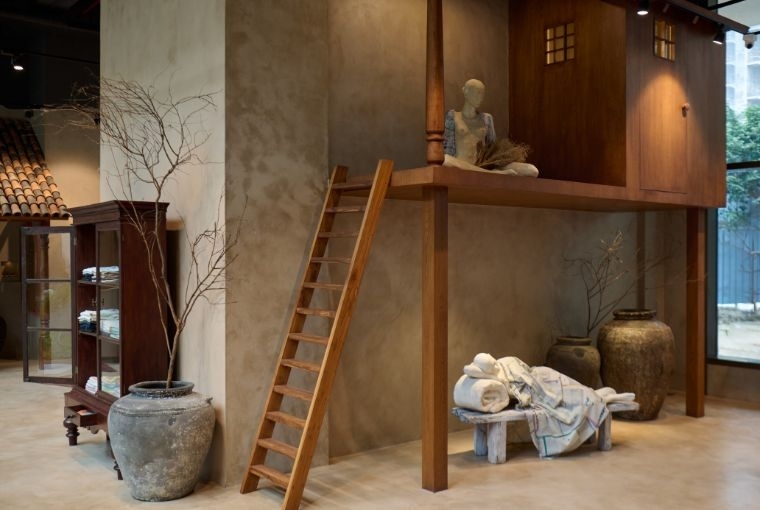
The interiors of the Gurgaon store incorporate materials like handmade tile roofs and antique furniture from Sri Lanka and Kochi. Can you share more about your process of sourcing and integrating these elements, and what mood did you want to create?
When we began conceptualizing the Gurgaon store, we already had a well-established aesthetic through our spaces in Lodhi and Kala Ghoda. We felt it was important to stay rooted in the familiar, tactile quality of Indian design something handmade, soulful while ensuring that the overall experience felt minimal and contemporary. We were clear that we didn’t want to replicate what is traditionally associated with Indian architectural grandeur palatial or haveli-style décor but instead wanted to bring forward the techniques and materials in a quieter, modern context. So, our discussions began with a mood board that aligned with this vision minimal, earthy, and monotonal.
This translated to an emphasis on terracotta, stone, and an overall muted palette that allows the architecture and garments to converse naturally. Antiques play a key role in this atmosphere as well. I prefer incorporating furniture that has lived a life, so we sourced refurbished antique pieces from various places. Much of the furniture was imported from an antique dealer in Sri Lanka, while some pieces were brought in from Kochi. We also handpicked artifacts from Jodhpur and other regions across India. These elements together help create a space that feels both grounded in tradition and open to contemporary expression true to the Eka philosophy.

In what ways does the new space differ in spirit? What did you want to preserve, and what did you want to reinvent?
Opening multiple stores has allowed us to articulate the world of Eka more expansively beyond just the clothes. Each space gives us an opportunity to express the sensibility we come from: what kind of world our garments belong to. From the beginning, our focus has been on rootedness expressing nostalgia, experience, and learned techniques—but without being confined by them. The key is to keep the core philosophy intact, while pushing the boundaries for new materials, new expressions, and evolving architectural vocabulary. Each physical space brings its own personality. Elements such as the quality of light, ceiling height, spatial proportions, flooring, and placement of windows all influence the aesthetic language. The Gurgaon location sits within a modern mall setting, surrounded by other stores, and therefore it inherently carries a more contemporary energy compared to a standalone, quaint shop.
That said, once you step inside, the essence of Eka is unmistakable. We retained the familiarity hand-touched finishes, earthy tones, crafts but adapted the space to feel lighter, more scaled to its context, and open to modern interpretations. It’s this balance of continuity and reinvention that defines the spirit of the new space.
Your new collection is inspired by Chamba embroidery. How did you adapt the intricate details of the craft to create contemporary garments for this collection?
As a designer, I’m constantly in search of inspiration that stays close to my roots something that speaks to my sensibility and understanding, yet challenges me creatively. I’ve worked with numerous craft communities during my stint with NIFT, and over time, I’ve developed relationships with antique dealers and caretakers of old textiles and artifacts. When traveling around India, I make it a point to visit these people not necessarily to buy, but to admire the richness of history through their collections.
On one such visit, I came across a Chamba Rumal that was only half-complete. It wasn’t an exemplary piece by conventional standards unfinished, with visible imprints of tracing, uneven tension in stitches, and an incomplete depiction of the traditional Krishna Leela. But it held a quiet charm perhaps stitched by someone still learning the craft, with marks of hesitation and intent equally visible. It was this imperfect beauty that drew me to it.
To me, this Rumal became a perfect metaphor for how I approach craft. I’m not interested in recreating or claiming to preserve it in its original form. Instead, I see myself offering a sincere design rendering respecting its origins while interpreting it with a light, contemporary touch. I want the wearer to feel the nostalgia and significance of the motif, without being weighed down by its intricacy or the pressure of cultural documentation.
While I believe the true custodianship of the craft belongs with the artisans in Chamba, my role is to reinterpret it for a new audience. I aim to make craft approachable especially for younger generations who may find traditional expressions intimidating. Through this collection, I blend history with modernity, inviting wearers to fall in love with the piece first, and then discover the cultural depth behind it. It’s about creating space for curiosity, connection, and continuity without over-intellectualizing craft, but keeping its soul present.
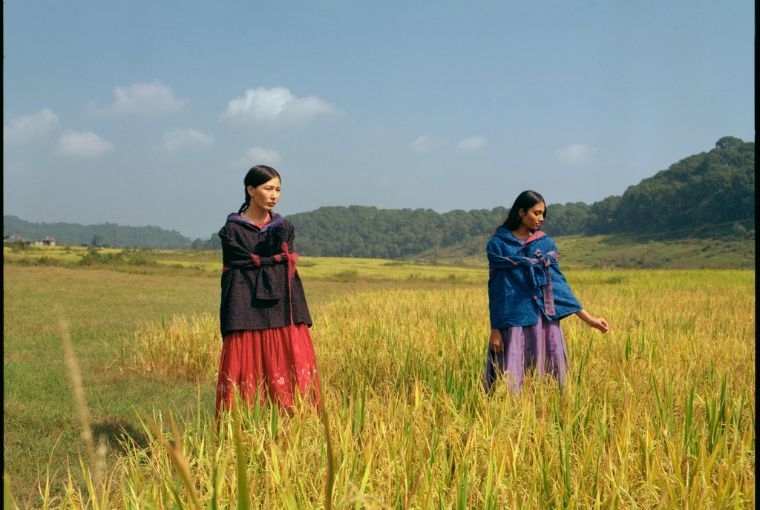
What inspired the exclusive Rare Collection jewellery line?
The Rare Collection jewelry line is currently still a work in progress, and we were unable to complete it in time for the Gurgaon store launch. We look forward to sharing more about this collection at a later stage, once it’s ready to be unveiled.
What does the 'whole universe of Eka' mean to you in 2025 and beyond?
For the first decade of Eka, we were focused on self-definition understanding who we are, season after season, and distilling what makes our signature distinct. It was a period of introspection and creative exploration.
Now, stepping into the second decade, the focus shifts toward growth, expansion, and clarity in our brand voice. The retail stores are a significant part of that evolution they allow us to engage directly with our audience, not just visually but physically, emotionally, and commercially. Through them, we learn what resonates while preserving what is quintessentially Eka.
The 'universe of Eka' today is much more expansive. It encompasses womenswear, menswear, home textiles, artful displays, and now festive wear for the Indian audience. Each store offers a multi-sensorial experience, calling forth nostalgia, craft, and culture not just clothing. These elements together invite deeper conversations and connections, reflecting the many layers of the brand. In this next phase, the aim is to build confidently on our foundation embracing commercial growth while staying true to the lyrical, craft-rooted, and art-forward spirit that defines Eka. As you reflect on over a decade with Eka, what remains your biggest inspiration, and what new directions are exciting you for the future?
Having completed our first decade grounded in discovery and self-definition and now opening the second with expansive retail and a renewed brand focus, I’m clear about one thing: India will forever remain my primary inspiration. It’s not just a source of motifs or techniques; it’s my home, my framework of thought, my creative soil. But this doesn’t mean staying static or nostalgic. I don’t want Eka to feel outdated or confined to traditional interpretations of craft. Instead, I want to push Indian artistry into new spaces into the foreground of conversations, into the hands of younger generations, into contexts where craft is experienced as relevant, modern, and alive.
The goal isn’t to replicate or preserve the past, but to reinterpret its wisdom for today in retail environments, events, and dialogues where tradition meets curiosity. After spending a decade establishing our language, I now feel deeply confident in exploring this sensibility with maturity and depth honoring where we come from while innovating where we’re headed.
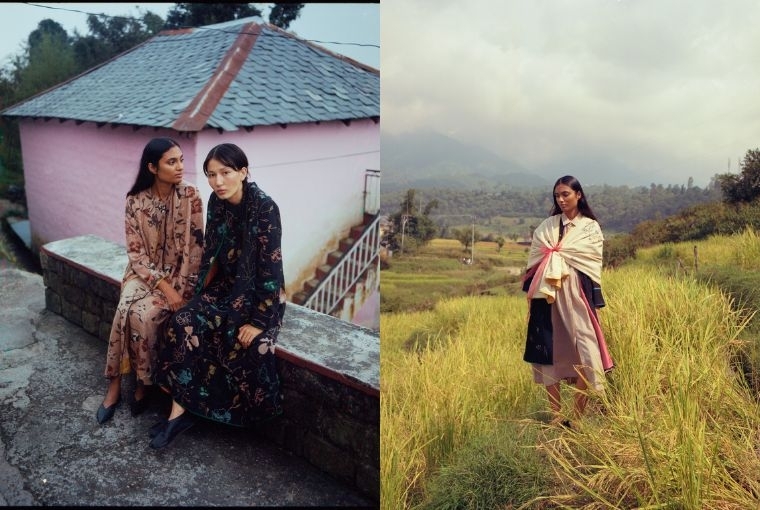
Words Hansika Lohani
Date 7-11-2025